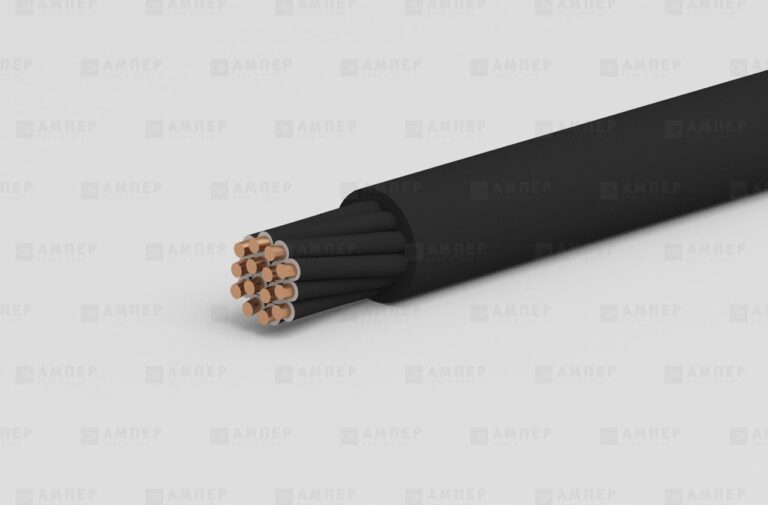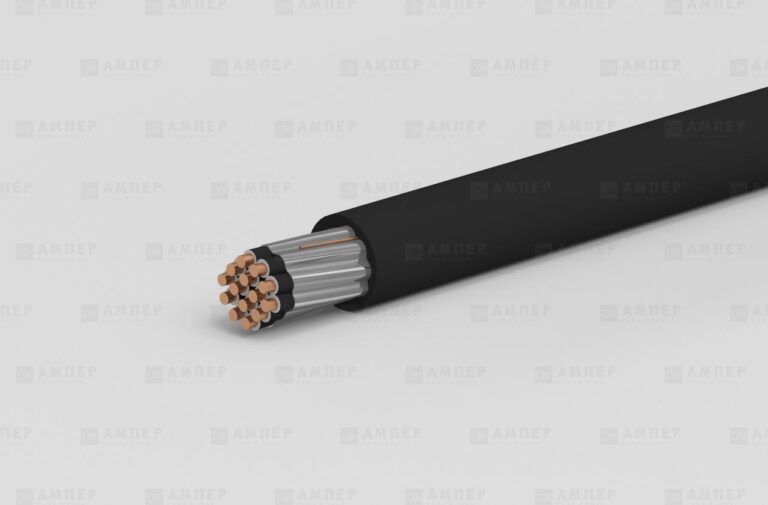Control cables with plastic insulation TU 27.32.13-003-51465330-2023
The cables are intended for fixed connection to stationary electrical devices, apparatus, assemblies of electrical distribution devices with a rated alternating voltage of up to 660 V, frequency of up to 100 Hz, or direct voltage of up to 1000 V.
Type of climatic modification UHL, placement categories 1, 5 according to GOST 15150.
The cables comply with the requirements of the basic regulatory document GOST 1508, GOST 26411.
Warranty period: three years from the date of commissioning of the cables
Unshielded and unarmored cables are intended for laying cable lines in rooms, channels, tunnels, in aggressive environments, in the absence of mechanical stress on the cable.
Shielded cables are intended for laying cable lines in rooms, channels, tunnels, in aggressive environments, in the absence of mechanical stress on the cable and the need to protect electrical circuits from the influence of external electric fields.
Armored cables are intended for laying cable lines in rooms, channels, tunnels, in aggressive environments and in places exposed to stray currents, if the cable is subject to significant tensile forces
Cables with filling between insulated cores are intended for electrical installations that require cable sealing during entry.
Flame retardant cables with insulation and sheath made of polyvinyl chloride plastic with reduced fire hazard, including those with reduced toxicity of combustion products and halogen-free polymer compositions can be used at nuclear power plants outside the containment zone in NPP systems of class 2, 3 and 4 according to the classifier OPB-88/97 (PNAE G-01-011-97) and metro facilities.
The use of cables in hazardous areas is allowed in accordance with the established requirements of GOST 30852.13:
– armored, flame retardant – open and hidden laying for classes 0, 1, 2;
– unarmored – open and hidden method for classes 0, 1, 2 in steel water and gas pipes
with a single installation method and open method for class 2 in the absence of mechanical and chemical influences.
Cables of all brands, except for cold-resistant cables, are intended for operation at ambient temperatures from minus 50 ºС to plus 50 ºС and relative air humidity up to 98% at a temperature of 35 ºС. Cold-resistant cables are designed for operation at ambient temperatures from minus 60 ºС to plus 50 ºС.
Cables can be laid without preheating at a temperature not lower than:
minus 15 ºС – for cables of all brands, except cables in cold-resistant design;
minus 30 ºС – for cold-resistant cables.
The minimum bending radius during laying and installation should be:
– 10Dн – for armored cables;
– 6Dн – for unarmored cables,
where Dн is the outer diameter of the cable.
The long-term permissible heating temperature of cable cores in operating modes should not exceed 70 °C.
It is allowed to operate cables in high mountain areas at an altitude of no more than 4300 m above sea level. In this case, the long-term permissible heating temperature of the cable cores must be reduced at the rate of 0.6 °C for every 100 m above 1000 m above sea level.
Products can be manufactured in the following versions:
– “ng(A)” – flame retardant, when laid in groups according to category A;
– “LS” – with reduced smoke and gas emissions (Low Smoke);
– “FR” – Fire Resistance;
– “HF” – does not contain halogens (Halogen Free);
– “LTx” – with low toxicity of combustion products (Low Toxic).
Cable constructions:
– The conductive conductors of the cables must comply with class 1 according to GOST 22483.
– Thermal barrier over the conductor for fire-resistant cable in the “FR” version.
– Insulation of current-carrying conductors: polyvinyl chloride plastic; polyvinyl chloride plastic compound of reduced fire hazard; cross-linked polyethylene; polymer composition that does not contain halogens.
– Inner cable sheath: polyvinyl chloride plastic; polyvinyl chloride plastic compound of reduced fire hazard; polymer composition that does not contain halogens.
– Screen: aluminum polymer tape, copper polymer tape, copper tape.
– Armor type: made of two galvanized steel strips or galvanized steel wires.
– Outer sheath or protective hose (in armored cables): polyvinyl chloride plastic; polyvinyl chloride plastic compound of reduced flammability; polyvinyl chloride plastic compound of reduced fire hazard; polyethylene; polymer composition that does not contain halogens.
Examples:


